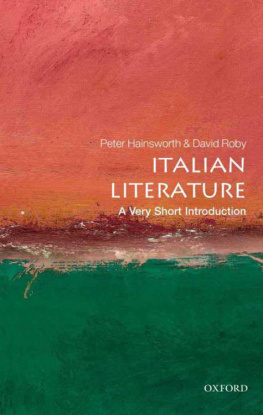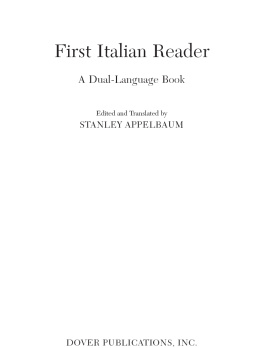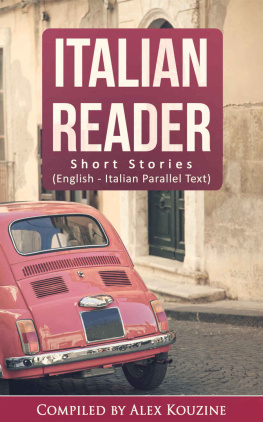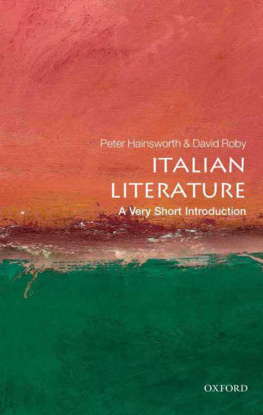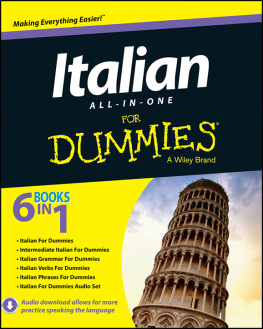T HE FIRST LUMINATION OF ITALIAN AMERICAN LITERATURE was but a lone, faint glow of candlelight in the dark chambers of history. Though veiled by mystery and the passing of centuries, the tale of this light is a tale that I love to rekindle; for it is the tale of a writer who lived and wrote as one, in the beautiful spirit of the wandering and windswept soul of all Italian-blooded writing: a spirit in which writing, the breath of life, the quietus of death, and the immanence, breezes, and storms of the never-ending are naturally, inexorably bound.
He was a Jew, born as Emanuele Conegliano, in 1749, in the now vanished town of Ceneda, north of Venice. At the age of fourteen, when his widowed father took another wife, who was Catholic, his family, as required by law, converted to the Cross. Young Emanuele took the name of the officiating bishop. As Lorenzo Da Ponte, he entered a seminary, became a scholar of Hebrew, classical Greek, and Latin. Ordained at twenty-four, he was assigned to a church in Venice, where he befriended and caroused with Casanova. The priest arranged brothel entertainments, deflowered the fairest of his flock, and twice planted his offspring in the womb of a married woman. But it was his verse that brought down upon him the wrath of the authorities, who declared certain of his rhymes to be dangerously seditious. After fleeing to Vienna, he was tried and condemned in absentia. In Vienna, he met Mozart, and it was as the librettist for the composers operas La Nozze di Figaro, Don Giovanni, and Cos Fan Tutte that Lorenzo Da Ponte and his verse found immortality. Following Mozarts death, in 1791, Da Ponte moved to Trieste, where, though still a Roman Catholic priest, he is believed to have proposed marriage to a British lady. It is not known whether they were wed, but they did present themselves as husband and wife, and as Anglicans. On Casanovas advice, the couple moved to London, where for a dozen years Da Ponte wrote, translated, doctored plays and libretti, and operated a rare-book shop. Fleeing arrest for debt, he escaped, in 1804, to the United States, where he opened a grocery store in Philadelphia.
In time, after further misadventures, Lorenzo Da Ponte ended up affiliated with Columbia College, the successor to Kings College, in downtown Manhattan, in the block bounded by Church Street, College Place, Barclay Street, and Murray Street. (Later, in 1897, after taking over the lands of the Bloomingdale Asylum for the Insane, far uptown, in Morningside Heights, the college would become Columbia University.) There, he lectured on Dante and held the schools first, nonpaying professorship of Italian literature. He published several volumes: his Storia della lingua e letteratura italiana in New York (1827); The Memoirs of Lorenzo Da Ponte (1829), which offered a foretaste of the full Memoirs, published posthumously; and A History of the Florentine Republic (1833).
His Italian Opera House, which opened at the northwest corner of Church and Leonard Streets in the autumn of 1833, was a great failure and was abandoned after eight months and a loss of nearly thirty thousand dollars. The elderly Da Ponte died broke in New York in the summer of 1838. His funeral was held at the old St. Patricks Cathedral, on Mulberry Street, near the heart of what would come to be Little Italy; and he was buried, probably in the tomb of a friend, in the old Catholic cemetery on East Eleventh Street. By the end of the 1800s, the deteriorating old graveyard fell victim to the new century. The caskets and bones that lay under its ground were dug up, hauled off, and dumped in Calvary Cemetery in godforsaken Queens. The remains of Lorenzo Da Ponte, whose grave had been unmarked, were as lost as the memory of him.
The first, faint, and errant glow of candlelight was extinguished, and it was a long time until the light of Italian American literature was renewed.
Quite unlike Da Ponte, the waves of Italian immigrants that came to the United States in the latter years of the nineteenth century and the early years of the twentieth were for the most part unlettered laborers fleeing poverty and hard times in the agricultural southern provinces.
I have a copy of the birth certificate of my grandmother Laurina Cicchetti, who was born in Abruzzi in 1896. On this document, there are clues about her parents, whom I never knew. Her mother is described as a contadina a peasant; her father, a mugnaio a miller. But the descriptive that pronounces itself most strongly is analfabeta illiterate. It was in the new land that she married my grandfather Filippo Tosches, who came to New York in 1899 from the hill town of Casalvecchio di Puglia, which is to this day one of the rare places where one can commonly encounter the ancient Albanian-Italian surname of Tosches.
It was one of my grandparents generation, an unskilled laborer who learned to put the language of his new homeland to writing, who can be said to be the father of modern Italian American literature.
The word Bohemian has fallen to a trite, hackneyed ruin; but this figurative sense of the word originally denoting natives of Bohemia and gypsies long ago well filled a gaping hole in our vocabulary. As defined by the Westminster Review in 1862: The term Bohemian has come to be very commonly accepted in our day as the description of a certain kind of literary gipsey, no matter in what language he speaks, or what city he inhabits. Included in this definition was a hint of the social and cultural outlaw or outcast: A Bohemian is simply an artist or littrateur who, consciously or unconsciously, secedes from conventionality in life and in art.
Bertolottis was a trattoria-saloon-caf run by Angelo Bertolotti and his wife at 85 West Third Street, in Greenwich Village. It was the joint that marked the beginning and became the heart of the Villages transformation, simultaneously, into an Italian and a Bohemian neighborhood, bringing together and serving as the shared haven and hangout of both communities of social outsiders.
Emanuele Carnevale (18971942) supported himself as a dishwasher in the Greenwich Village of that golden age. Radical Italian American political and social theorists such as Carlo Tresca (18791943) and Arturo Giovannitti (18841959) had published poetry, most notably Giovannittis Arrows in the Gale of 1914; but these men were rare, academic exceptions. It is with Carnevale that the true Italian American lifeblood begins to flow. His sole book, Tales of a Hurried Man (1925), made an impact on modern American poetry. Praised in his day by William Carlos Williams and others, he since has been all but forgotten. But I can often feel a current, if only spiritual, running from Carnevale to Gregory Nunzio Corso (19302001), a greater, wilder, and more lyrical poet, born to teenage Italian-immigrant parents in the Greenwich Village of Carnevales and Bertolottis day.
Meanwhile, out west, John Fante (19091983), also a son of Italian immigrants, in early stories such as The Odyssey of a Wop and collections such as Dago Red (1940), forged a rotgut-poetic prose that resounded in the fiction of his admirer Charles Bukowski. In the 1950s and 1960s the names grew numerous: from John Ciardi (19161986) to Mario Puzo (19201999), from Corso to Gilbert Sorrentino, to mention only those who present themselves at this moment to my wandering mind. And to this wandering mind comes, too, the memory of laughter shared with Puzo over how he had fabricated godfather as a Mafia term, and how even the FBI had come to accept this fairy-tale terminology as una vera parola della malavita . And yet it is the private joke of The Godfather, and not his beautiful earlier novel, The Fortunate Pilgrim, for which the fable-hungry masses remember Mario. To somewhat bend the meaning of those words to which Lorenzo Da Ponte gave life: cos fan tutte.




